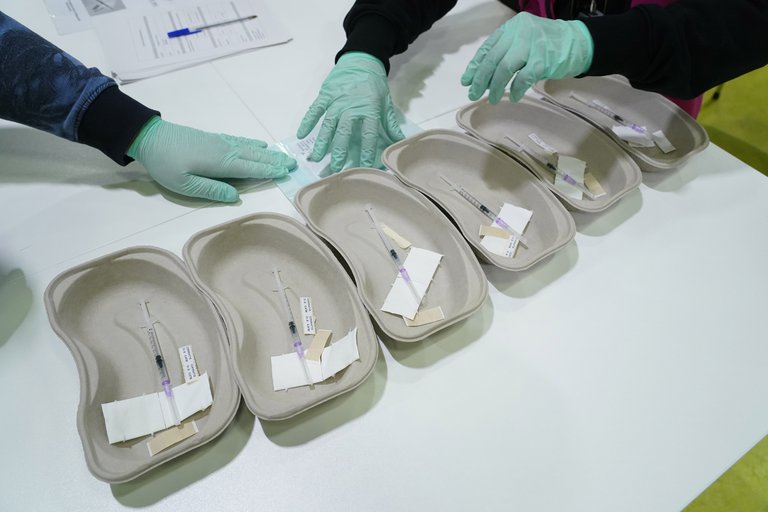RIO DE JANEIRO, BRAZIL – The COVAX facility, launched by the World Health Organization (W.H.O.) to promote equitable access to Covid-19 vaccines, announced on Wednesday, February 3rd, that it plans to distribute 337 million doses to low- and middle-income countries during a first stage that will begin between the end of this month and the beginning of March. The figure does not represent the total amount of vaccines that countries will be supplied.

Virtually all of these doses will be the vaccine developed by AstraZeneca and Oxford University, which will provide a total of 336 million doses; 96 million will be produced directly by AstraZeneca and 240 million by the Serum Institute of India (SII) through an agreement between the two companies.
A total of 1.2 million doses of the Pfizer/BioNTech vaccine will also be distributed at this initial stage, said the head of the Vaccine Alliance (GAVI), Seth Berkley, whose organization is involved in the COVAX initiative.
It is expected that from the second quarter onward, Pfizer will increase the volume of supplies to the program (up to 40 million doses), according to an advance purchase agreement that the American pharmaceutical company signed with GAVI.
Nations in the Latin American region will receive vaccines through this facility, which the W.H.O. is coordinating with GAVI and the Oslo-based CEPI Foundation as its main partners, the latter dedicated to funding independent infectious disease vaccine projects.
The following list shows the number of doses to be allocated to the region’s countries, in alphabetical order:
Argentina: 2,275,200 doses from AstraZeneca;
Bolivia: 900,000 doses from AstraZeneca (Serum Institute of India) and 92,430 from Pfizer;
Brazil: 10,672,800 from AstraZeneca;
Chile: 957,600 from AstraZeneca;
Colombia: 2,553,600 from AstraZeneca and 117,000 from Pfizer;
Costa Rica: 254,400 from AstraZeneca;
Dominican Republic: 542,400 from AstraZeneca;
Ecuador: 885,600 from AstraZeneca;
El Salvador: 324,000 from AstraZeneca and 51,480 from Pfizer;
Guatemala: 847,200 from AstraZeneca;
Haiti: 876,000 from AstraZeneca;
Honduras: 496,800 from AstraZeneca;
Mexico: 6,472,800 from AstraZeneca;
Nicaragua: 504,000 from AstraZeneca (Serum Institute of India);
Panama: 216,000 from AstraZeneca;
Paraguay: 357,600 from AstraZeneca;
Peru: 1,653,600 from AstraZeneca and 117,000 from Pfizer;
Uruguay: 172,800 from AstraZeneca;
Venezuela: 1,425,600 from AstraZeneca;
COVAX stated that these supplies will enable meeting the target of ensuring coverage of at least 3% of the populations in all countries by the first half of 2021. The goal is to protect the most vulnerable groups, such as healthcare workers.
AstraZeneca’s vaccine, unlike Pfizer or Moderna’s with which the European and U.S. populations are being immunized, offers immunity close to 70% from a single dose. This has been confirmed by the pharmaceutical company in a new study published on Tuesday, February 2nd, in which it also stated that it reduces virus transmission by 67%.
In addition, AstraZeneca’s vaccine does not require ultra-cold storage temperatures and can be preserved at regular refrigerator temperatures, thereby being the most appropriate vaccine for countries with few resources and limited infrastructures.
With respect to the 240 million AstraZeneca vaccines manufactured in India by SII, between 35% and 45% will be available by the end of March and the remainder in the second quarter of the year.
Of the 96 million that will be produced at AstraZeneca’s plants, only 15% will be available by the end of the first quarter; 56% will be available in the second quarter and the remainder in the second half of the year.
Last weekend, the COVAX notified each of the recipient countries in writing of their specific allocation by vaccine type, but officials in charge of the facility explained that these are “indicative figures” that may vary if unforeseen events occur in the production process, something that has happened with different pharmaceutical companies over the first few weeks this year.
However, knowing the numbers and deadlines for this first stage of vaccine distribution through the COVAX will allow countries to prepare their necessary logistics, legal procedures to be observed and to advance in the training of staff in charge of vaccination.

